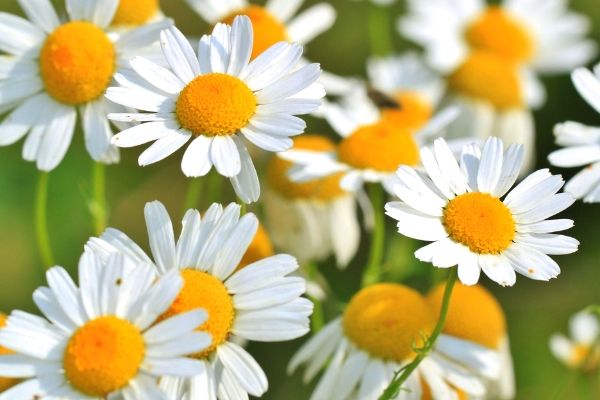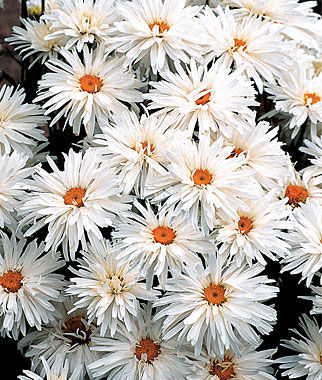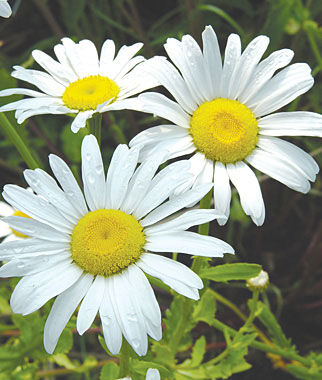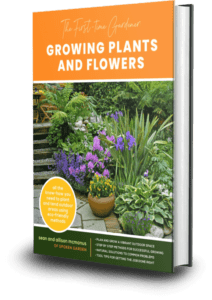What You’ll Learn:
- Quick facts about our featured plant.
- Links to buy your own Shasta daisies.
- Links and videos for further resources or education.
Caring for Shasta daisies is a lot easier than you think. They produce large, white flowers, attract pollinators, and can be divided each fall to form new plants around your landscape! Learn quick care and planting tips for this must-have, summer-blooming plant! In “Shasta daisy Care – A Mini Plant Profile” – DIY Garden Minute Ep. 102 – learn proper plant care and quick growing tips.
This episode is meant for any gardener who is looking for an introduction to growing and caring for Shasta daisies. Also, you are obviously here because you want to know more about Shasta daisies, we have a free Shasta daisy plant profile sheet at this link!
Jump ahead to the section you need:
To prolong the life of your Shasta daisies throughout the summer months (maybe even into the fall), you need to deadhead them at the right time using the proper tools (see below for when to do this).
This specific tool is perfect for deadheading all your daisies and most other plants in your garden. These pruning shears we are recommending are best for any plant material that measures up to an inch in diameter and the ones we’ve been using for years. Perfect for your daisies!

Shasta Daisy Plant Care
A perennial summer favorite, these cottage garden flowers will bloom profusely throughout most of the summer, attract tons of pollinators, and require very little maintenance.
Shasta care facts:
- In the Asteraceae family.
- Are considered a herbaceous perennial.
- Related to Asters, Coneflowers, Chrysanthemums, and even Lettuce.
- Have small to medium-sized, round flowers with white outer petals and a yellow inner center.
- Bloom during the summer.
- Sunset= Zones A1 to A3; 1 to 24. USDA= Hardy to zones 4a to 10b.
- Prefer full sun with some shade in the hottest zoned climates.
- They like well-draining, enriched soil.
- Need regular to moderate watering.
- Native to China, Japan, and parts of Europe.
- Low to moderate level of maintenance, with most maintenance happening after blooming and stems.
Shasta Daisies For Sale
Now it’s time to pick out more daisies to add to your landscape. Now it’s time to pick out your own shasta daisy seeds from Eden Brothers or live plants from Burpee! You have to see these beautiful options! Or, if you need to shop for other garden plants for this summer, click here for the most up to date deals on plants, bulbs, and seeds best sellers on Amazon!
Shasta Daisy Seeds
This season, we’re planting the Daisy Crazy seed mix from Eden Brothers which includes 10 species of different daisies. Some are annuals and some are perennials.
Daisy Crazy – Daisy Flower Seed Mix, Mixed…
Daisy Crazy – Daisy Flower Seed Mix. Daisies have long been a staple in just about any garden… [More]
Here are a few of the types of daisies included in the mix:
- Shasta Daisy
- Creeping Daisy
- Painted Daisy
- African Daisy
- English Daisy
- Ox-Eye Daisy
Already, we’re impressed with how fast our large order came in the mail. Plus we got a free gift!
Shasta Daisy Seeds from Burpee
Below, we have options for more daisy seeds from Burpee if you want to add these to your garden.
Each of these pictures below is a clickable link:
Thanks for Listening!
That’s all for this podcast episode! You can find other beginning gardener topics on
our podcast page by clicking here or go to SpokenGarden.com and click on the “Listen” tab. Also find us on your favorite podcast platform and smart speaker!
Share our show or follow us on
Subscribe on
*Spoken Garden is a participant in the Amazon Services LLC Associates Program, an affiliate advertising program designed to provide a means for sites to earn advertising fees by advertising and linking to Amazon.com.
Some of the resources and products below may be affiliate links, meaning we might get paid a commission (at no extra cost to you) if you use that link to make a purchase.
- Black-eyed Susan Care: A Mini Plant Profile – DIY Garden Minute Ep.159 (podcast)
- Checkout and Order our New Book: 1st Time Gardener: Growing Plants and Flowers.
- Want to get started, but not sure on what? Go to our Start-Here Page!











